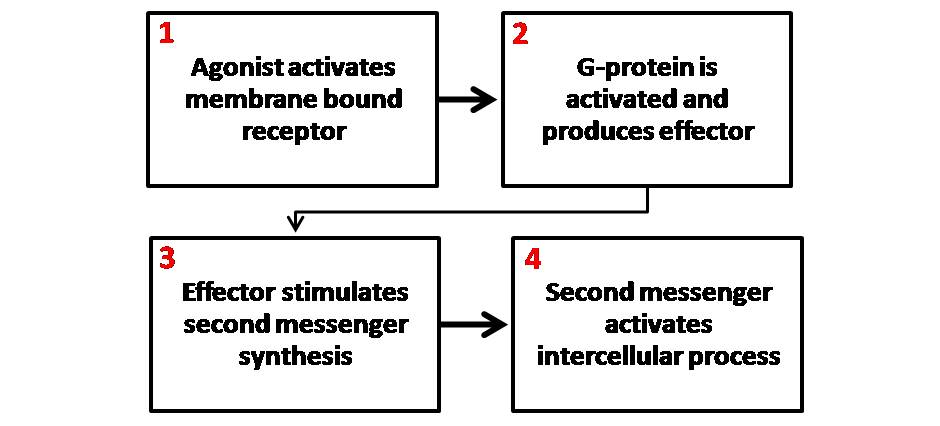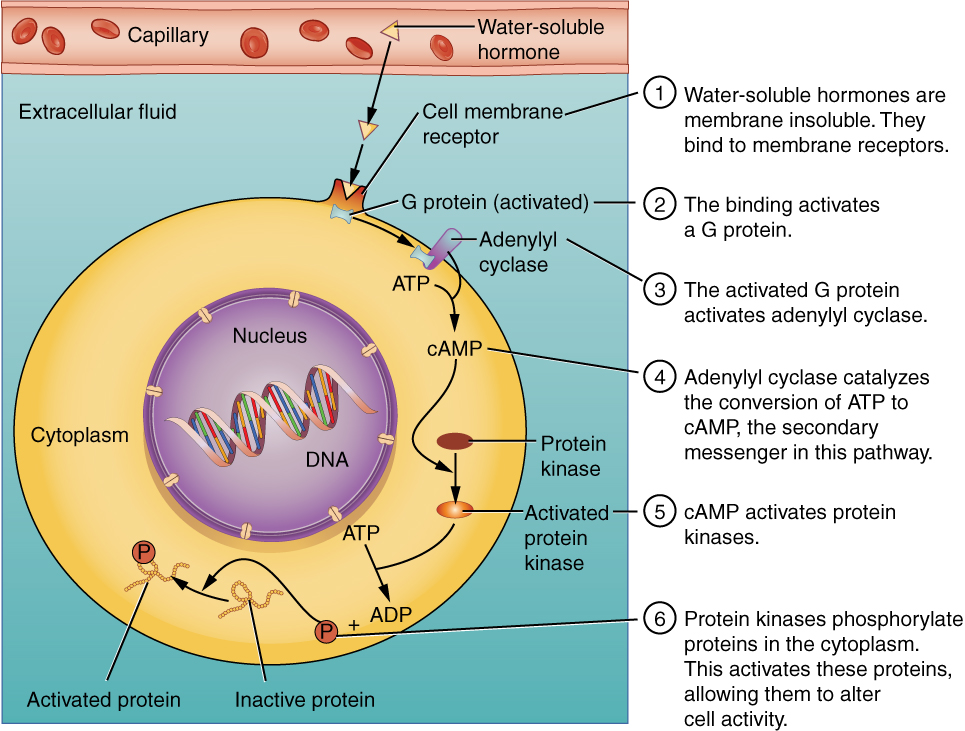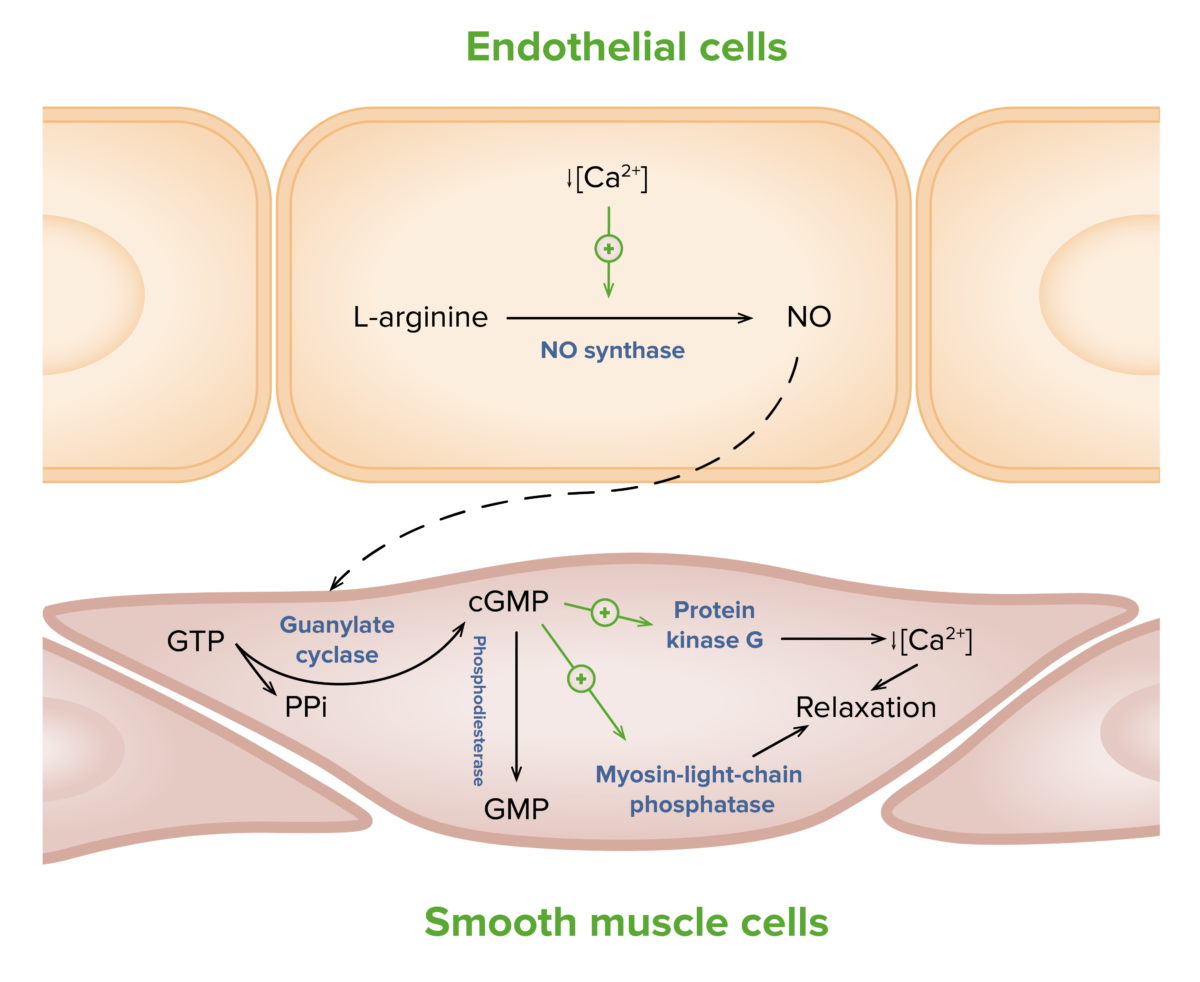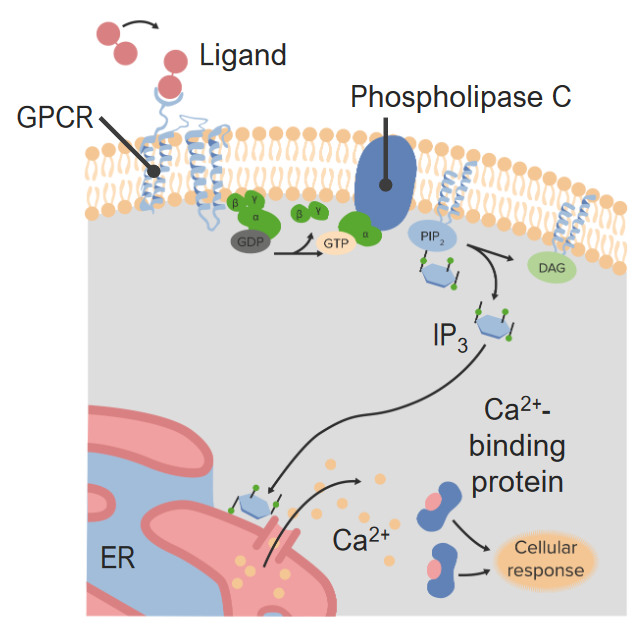Signaling pathways are complex systems in which a single extracellular signal can elicit multiple intracellular events, some of which may also be triggered by other signaling pathways or may themselves trigger other intracellular events. "Second messengers" is a term used to refer to a diverse group of small molecules or ions that transmit the extracellular signal initiated by a ligand binding to a cell surface receptor Receptor Receptors are proteins located either on the surface of or within a cell that can bind to signaling molecules known as ligands (e.g., hormones) and cause some type of response within the cell. Receptors to effector proteins Proteins Linear polypeptides that are synthesized on ribosomes and may be further modified, crosslinked, cleaved, or assembled into complex proteins with several subunits. The specific sequence of amino acids determines the shape the polypeptide will take, during protein folding, and the function of the protein. Energy Homeostasis inside the cell. In the resting state, small amounts of second messengers exist in a cell; however, their production can rapidly ramp up once a signal has been received. Once released inside the cell, second messengers bind BIND Hyperbilirubinemia of the Newborn to their target proteins Proteins Linear polypeptides that are synthesized on ribosomes and may be further modified, crosslinked, cleaved, or assembled into complex proteins with several subunits. The specific sequence of amino acids determines the shape the polypeptide will take, during protein folding, and the function of the protein. Energy Homeostasis and alter their properties (activity, localization, availability of reaction sites, stability, etc ETC The electron transport chain (ETC) sends electrons through a series of proteins, which generate an electrochemical proton gradient that produces energy in the form of adenosine triphosphate (ATP). Electron Transport Chain (ETC).), causing a change in the cell’s homeostasis Homeostasis The processes whereby the internal environment of an organism tends to remain balanced and stable. Cell Injury and Death and thus transmitting the message.
Last updated: Apr 25, 2025
Second messengers are intracellular signaling molecules released by the cell in response to first messengers, which are extracellular signaling molecules.

General schematic of the second messenger mechanism
Image: “Second Messenger Mechanism” by Lunska. License: Public Domain
G protein-coupled receptor pathway showing the activation of the cAMP second messenger system:
1: Water-soluble hormones are membrane insoluble, binding to membrane receptors.
2: Binding activates a G protein.
3: Active G protein activates adenylate cyclase.
4: Adenylate cyclase converts ATP to cAMP, the secondary messenger in the pathway.
5: cAMP-activated protein kinases.
6: Protein kinases phosphorylate proteins in the cytoplasm, altering cell activity.

Binding of Water-Soluble Hormones
ATP: adenosine triphosphate
cAMP: cyclic adenosine monophosphate

Nitric oxide signaling in smooth muscle cells through the cGMP pathway
GMP: guanosine monophosphate
GTP: guanosine triphosphate
PPi: inorganic pyrophosphate
Lipids Lipids Lipids are a diverse group of hydrophobic organic molecules, which include fats, oils, sterols, and waxes. Fatty Acids and Lipids present in the plasma membrane Plasma membrane A cell membrane (also known as the plasma membrane or plasmalemma) is a biological membrane that separates the cell contents from the outside environment. A cell membrane is composed of a phospholipid bilayer and proteins that function to protect cellular DNA and mediate the exchange of ions and molecules. The Cell: Cell Membrane, such as phosphatidylinositol 4,5-bisphosphate (PIP2), are often modified and utilized as second messengers. Binding of first messengers to receptors Receptors Receptors are proteins located either on the surface of or within a cell that can bind to signaling molecules known as ligands (e.g., hormones) and cause some type of response within the cell. Receptors can activate lipid-modifying enzymes Enzymes Enzymes are complex protein biocatalysts that accelerate chemical reactions without being consumed by them. Due to the body’s constant metabolic needs, the absence of enzymes would make life unsustainable, as reactions would occur too slowly without these molecules. Basics of Enzymes. This leads to the hydrolyzation of specific acyl chains or polar head groups on specific lipid groups, which allows them to function as second messengers.

G protein coupled receptor (GPCR) activates phospholipase C, which converts PIP2 into IP3 and DAG. IP3 promotes the release of calcium stores in the cell.
GDP: guanosine diphosphate
GTP: guanosine triphosphate